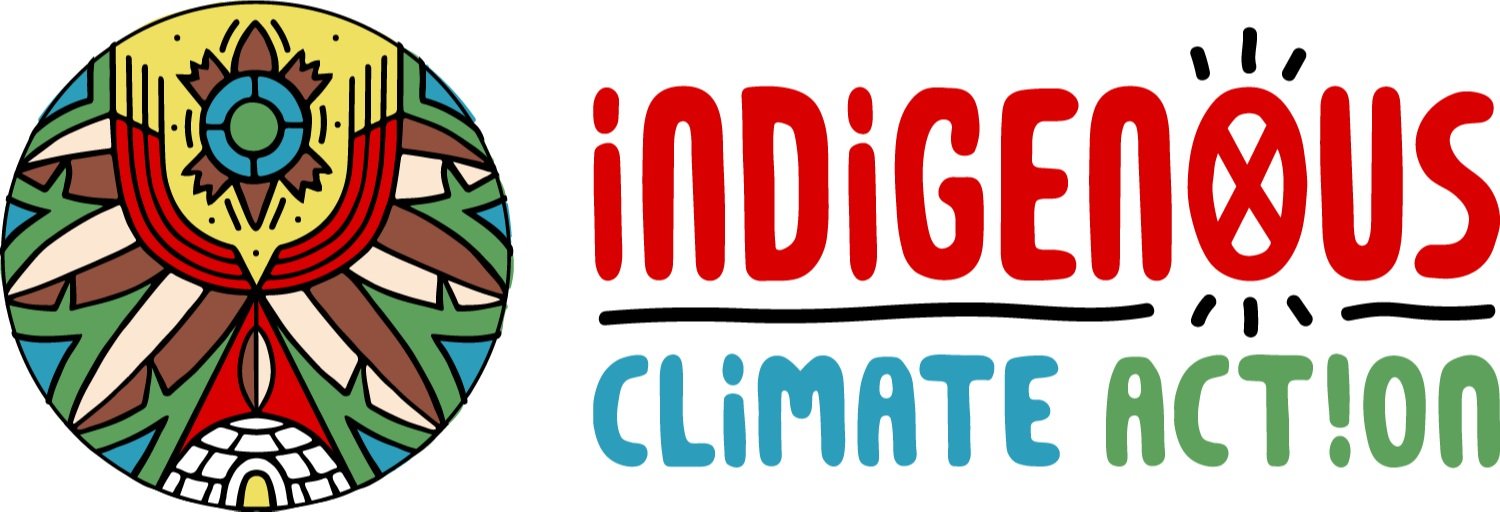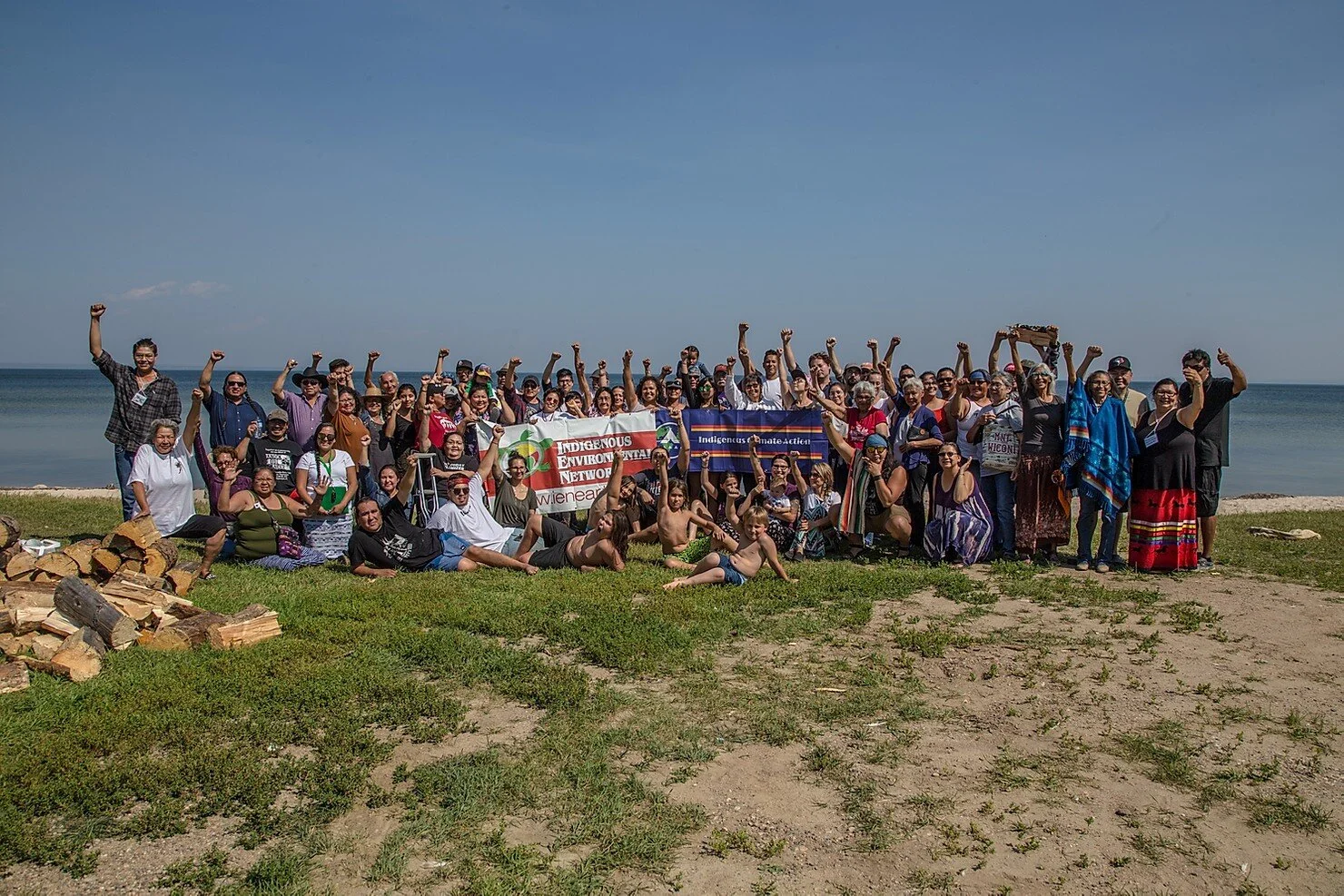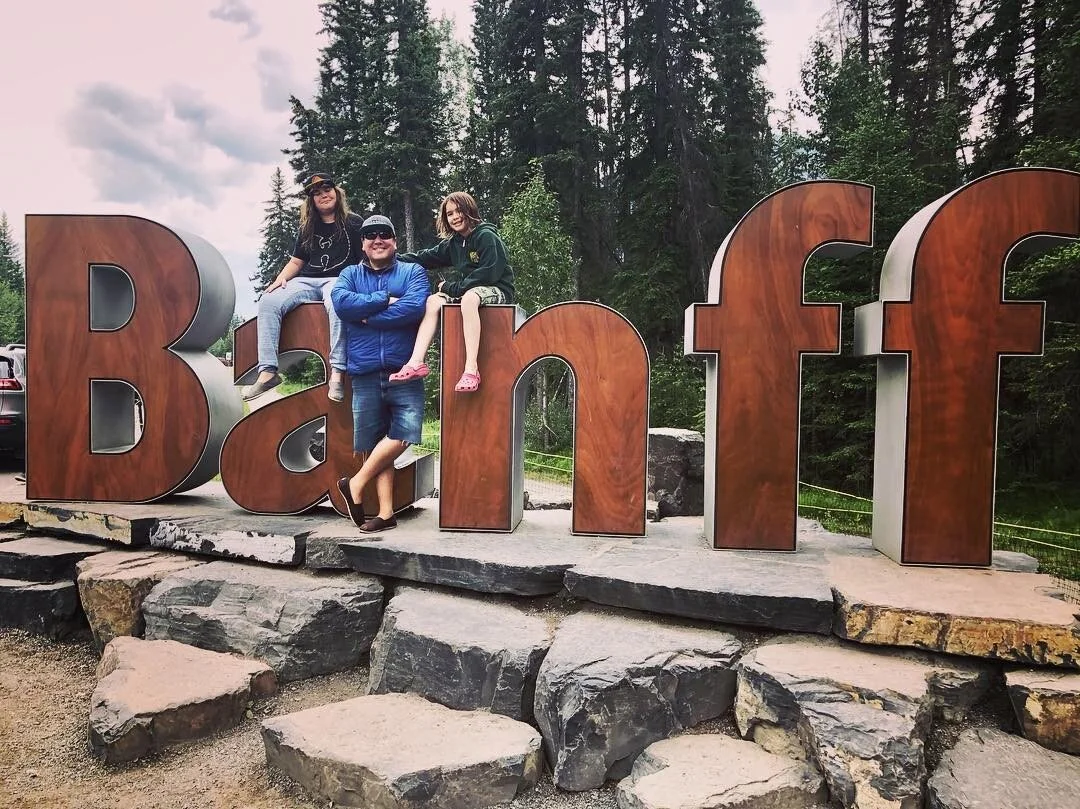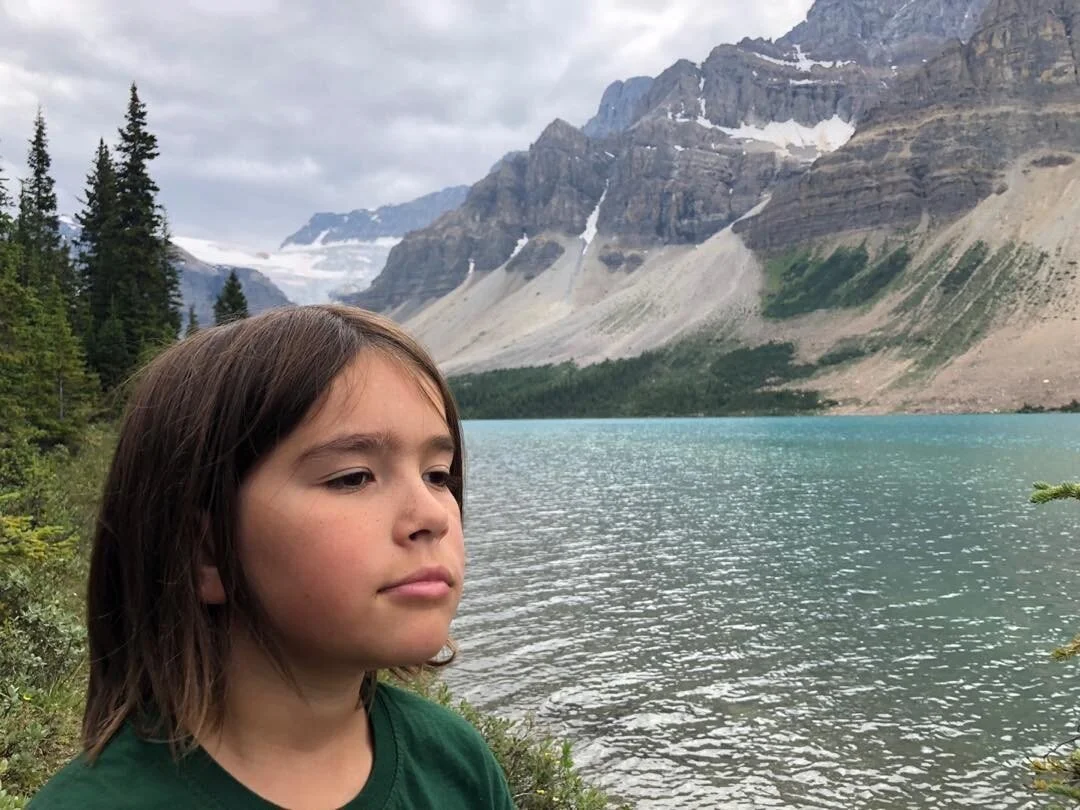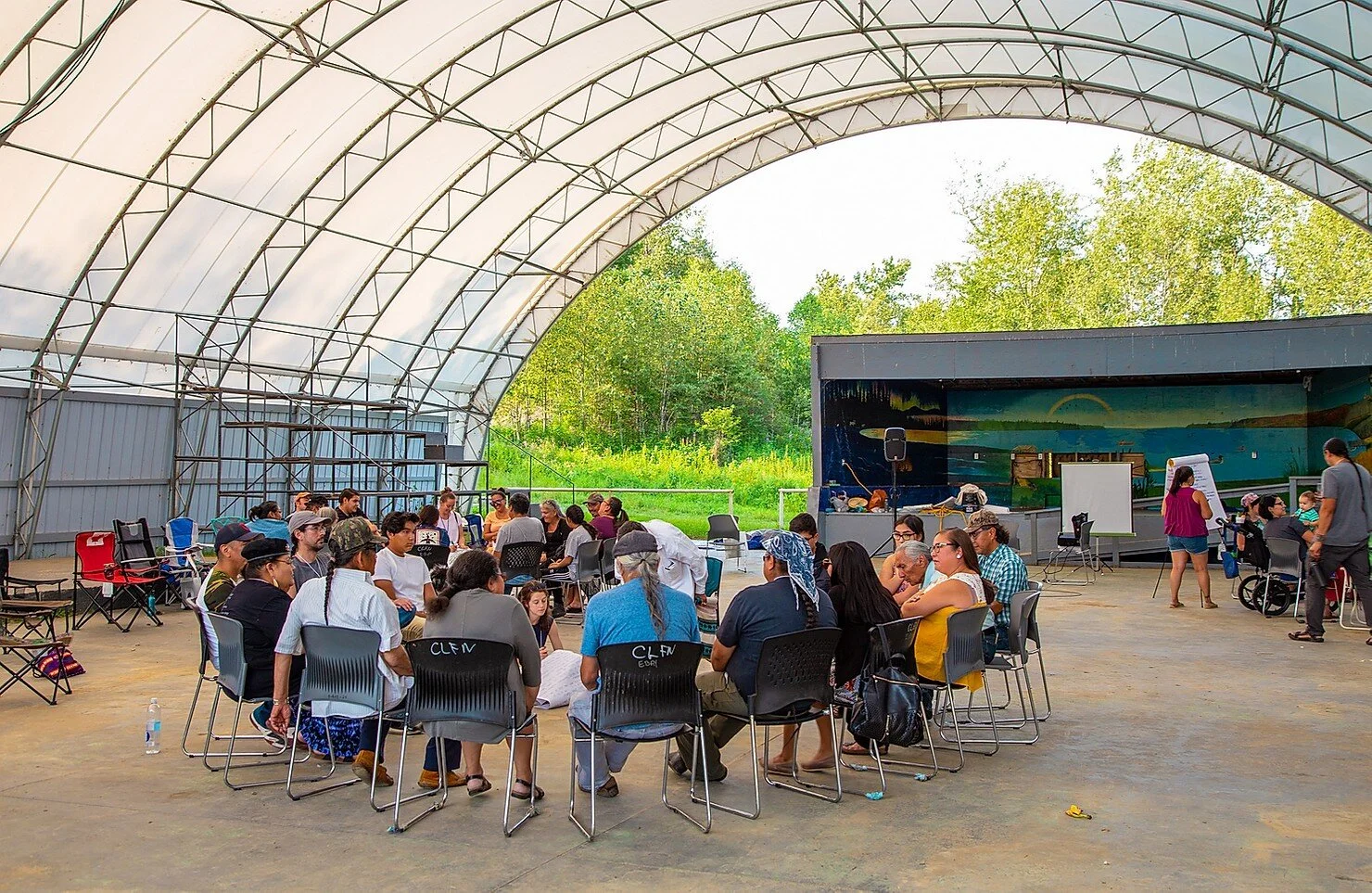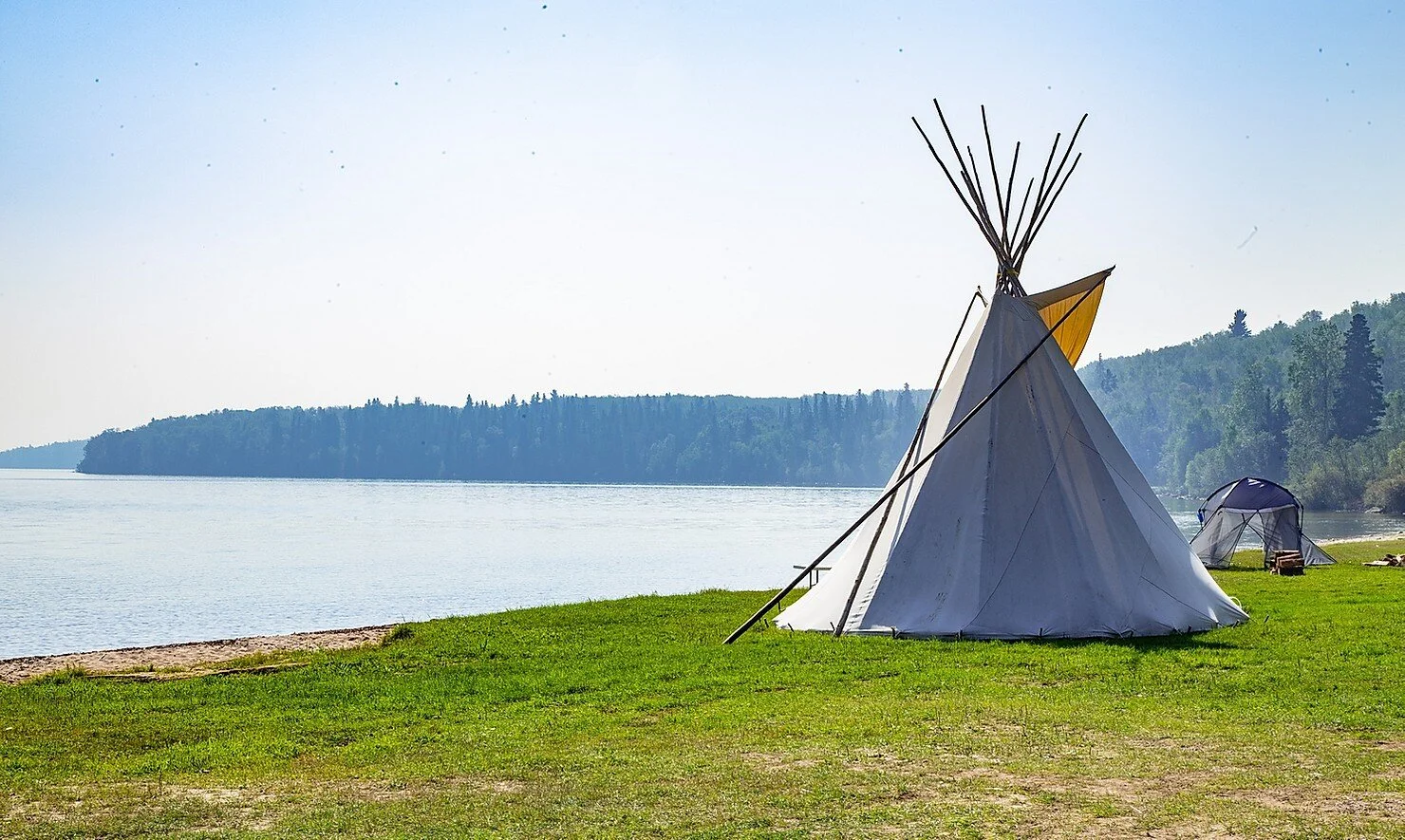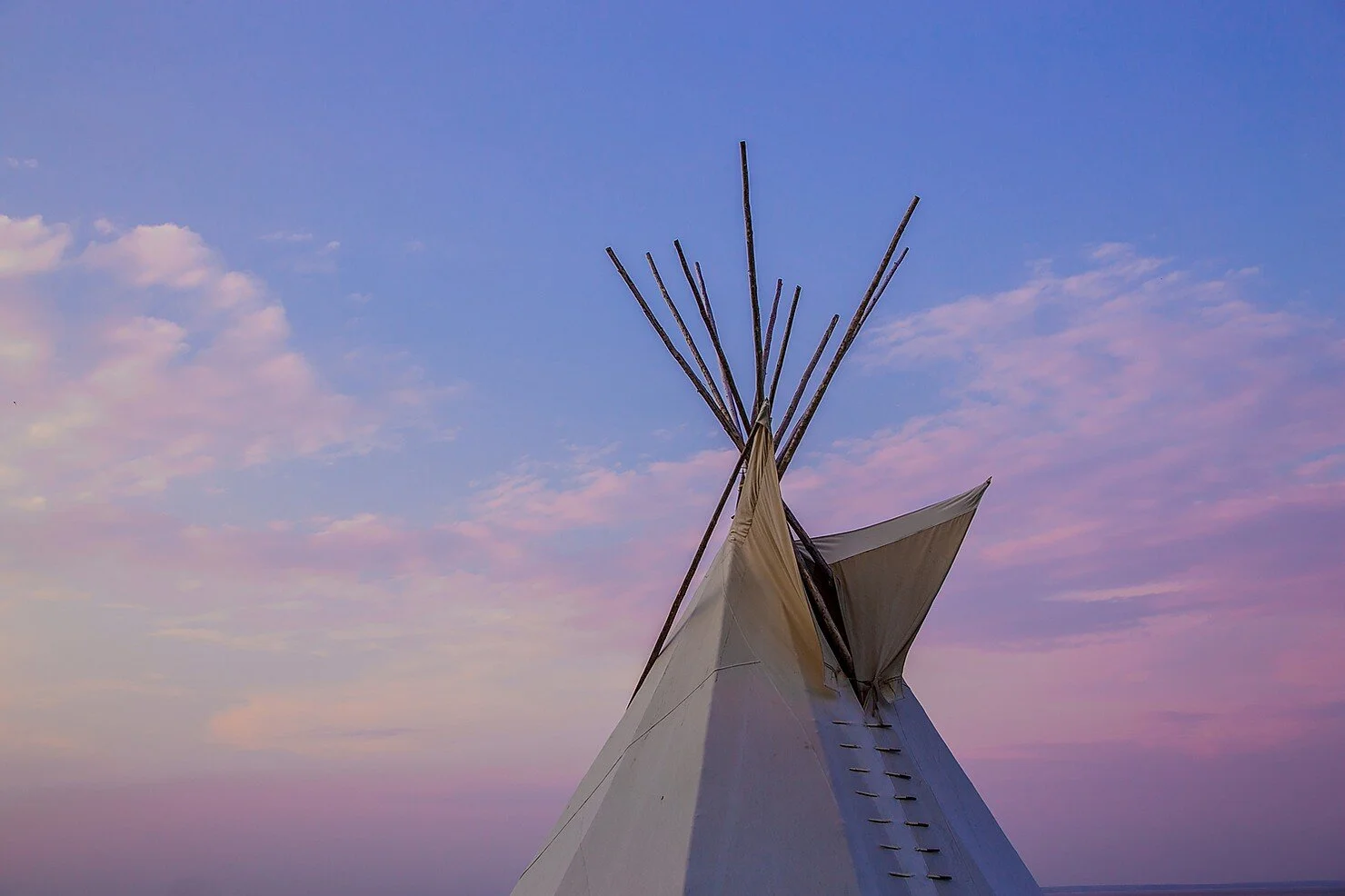Teaching My Sons That Water Is Life
This was a special summer for me as a dad. For the first time I took my sons, Felix and Jaxson, on that classic TransCanada road trip so many of us did when we were young. We traveled across two provinces, from Manitoba to Alberta. It was a journey across our Treaty 6 territory. We drove across many bodies of water, with much of it flowing north. Water—both our Cree and Dene relatives, along with every other Canadian, depend on for life. As I drove with my sons, I wondered what would be their takeaways, what would they remember?
Our destination was the Grassroots Grow Deep (GGD) - An Indigenous Climate Justice Training, a gathering I was supporting through my job as a campaigner with the global climate organization, 350.org. Indigenous Climate Action (ICA), Canada’s premiere Indigenous climate justice organization, had teamed up with USA-based Indigenous Environmental Network (IEN) to host a training on the historic Dogtown beach of Cold Lake First Nation, Alberta, Canada. The purpose was to promote Indigenous-led action on climate, rooted in our own traditional ecological knowledge, cosmos and worldview. The training camp also came together to re-invigorate Alberta-based grassroots opposition to the expansion of the Alberta Tar Sands and its associated infrastructure, such as the Keystone XL, Line 3 and Trans Mountain pipelines.
Group photo taken during the Grassroots Grow Deep (GGD) Climate Justice Camp
As we headed west, Felix, Jaxson and I decided we would take the long way, straight down Highway One to Calgary, up through Banff and east through the Rocky Mountain House, up through Edmonton, and north toward our destination, Cold Lake First Nation. Our day in Banff was very special. We bought food for a picnic in the mountain village of Canmore and, knowing that there would be no hot showers at the training in Cold Lake, we decided that we would go and have a steam at the Upper Banff Hot Springs. Following a couple hours of steaming, my sons and I attempted to go to Lake Louise—something I would never recommend anyone attempt on an August long weekend. After an hour of being stuck in a traffic circle, we came to realize that we would have to park twenty kilometres away and take a bus to view the former setting that had been printed on the twenty-dollar bill of my childhood.
Clayton, Felix, and Jaxson in Banff National Park
After accepting our failure to visit one of Canada’s most iconic destinations, Lake Louise, we drove north to Rocky Mountain House via Glacier Drive. I laughed with my sons as we drove and stopped at almost twenty glaciers and lakes just as iconic as Lake Louise along this epic route. We ate the packed lunches we had grabbed that morning in Canmore, pulled over on the side of the highway across from Crowfoot Glacier. I took the time to explain to my sons that this was the location that the mighty Athabasca River begins, which flows north spilling into Lake Athabasca, north into Great Slave and Great Bear Lake and into the mighty Mckenzie River basin and finally past Tuktoyaktuk into the Arctic Ocean. “All that water, all that life sustained, it all begins at these glaciers,” I said to them.
Jaxson in Glacier Pass, Alberta
Once we passed Rocky Mountain House, we found ourselves driving at the source of another significant body of water, the North Saskatchewan River. I explained to my sons that this was the river that flowed north east toward Hudson Bay, through Thunderchild Cree Nation. I said, “This is the river that Dad hunts on every fall to get our Elk, Moose, Ducks and Goose.” I took the time to explain this was the river that tar sands operator Husky Oil had fouled from a pipeline line rupture a couple years ago. The spill happened in the valley where my brothers and I hunt near Thunderchild Cree Nation in our Treaty 6 territory. I explained to them that we could no longer access one particular herd of Elk as the site had been completely blocked off by industry do to the spill. I told them this was why Dad works to stop pipelines and the expansion of the Tar Sands—so that our treaty lands, waters and climate can be healthy and safe from contamination.
When we arrived in Edmonton, we met up with Athabasca Chipewyan Dene Nation member and executive director of Indigenous Climate Action, Eriel Deranger along with the ICA staff. We connected with allied campaigners and trainers from the Council of Canadians, Rainforest Action Network and the Indigenous Peoples Power Project (IP3), who were also supporting the training. We all caravanned together to Cold Lake First Nation and set up camp on Dogtown Beach.
It's common knowledge that First Nations have been leading the charge in terms of challenging the expansion of big oil in Canada. Yet many do not know that the global campaign that has since arisen to stop the Tar Sands came out of a grassroots training very similar to Grassroots Grow Deep over a decade ago in the community of Fort Chipewyan. Inspired by the incredible outcomes of the IEN Indigenous Tar Sands Action Camp over a decade ago, ICA in partnership with IEN with the support of allied campaigners and community organizers, proposed the Cold Lake gathering.
The training was met with huge interest. The organizers expected around forty participants, and over one hundred showed up. This incredibly diverse group of people represented dozens of First Nations from across Alberta, South Dakota, Minnesota, New Mexico, British Columbia, Manitoba and Saskatchewan. Over 80% of the participants were Indigenous women. Our biggest challenge was feeding everyone, but thanks to a generous contribution from the local First Nations government and a very incredible kitchen crew, we were able to make sure everyone had food. The curriculum of the training focused on renewable energy, climate 101, non-violent direct action, community organizing 101, living off the land, media and digital storytelling and much break out space to talk about and internalize what we were learning and sharing with each other.
Breakout session during GGD
After over a decade of grassroots Indigenous-led escalation against pipelines, such as TransCanada’s Energy East and Keystone XL, Enbridge's Northern Gateway, Line 9 & 3, and of course Justin Trudeau’s Trans Mountain, many of the Alberta-based First Nations leaders who’ve led those battles have moved on. The need for a new cadre of Indigenous leadership to weave the importance of stopping Tar Sands at the source into the narrative of resistance has become paramount—especially in the wake of the largest Tar Sands mine proposed to date, the Teck Frontier mine. If built, this mine would be as large as all of the existing Tar Sands mines combined. It would have its own dedicated tailings pond so large it could be seen from outer space. Teck Frontier would be the feedstock for the Trans Mountain, Keystone XL and Line 3 pipelines. Many at the gathering talked about Teck Frontier and how to make this massive carbon bomb and the pending decision by Trudeau on whether or not to approve it in late 2019, a major election-year issue.
Over the three days and nights the air was thick with smoke from the raging climate change forest fires across BC and Alberta. The sun was red in the sky, as was the moon at night, and fighter jets from the nearby cold lake bombing range roared overhead daily and would be gone as fast as you could spot them. Many locals shared their concerns over the massive oil spill in the bombing range a few years prior. They questioned the intelligence of Canadian Natural Resources Limited (CNRL) and the Canadian Air Force for fracking in a place where missiles and bombs were being tested. To this day no one knows what impact the spill had on their traditional lands and waters as all First Nations governments and citizens in the area where denied information access due to national security.
Smoky skies over Dodtown Beach, Cold Lake, Alberta
Moments I was proud to participate in from the gathering included the opportunity to facilitate a community organizer training with my brother and IEN, Keep it in the Ground Campaigner, Dallas Goldtooth, of the comedy troupe 1491s and long-time community organizer and Wounded Knee veteran, Madonna Thunderhawk of Standing Rock. We built the training around the seven principles of the Indigenous organizer, a tool developed and shared by IEN
Dallas Goldtooth, Cedar George Parker and Clayton Thomas-Müller speaking on a panel during GGD
Movement veteran and Cold Lake First Nation member Brian Grandboi gave an impassioned call to action on the second day and was gifted a blanket for his life's work on the frontlines from Oka to Gustafsen Lake. Brian spoke of the importance of decolonization and shared with participants that he was battling a life-threatening illness but that he had no regrets about the life of resistance he had led and sacrifices he experienced. I remembered Brian always being there as an elder supporting and guiding the Native Youth Movement in the 1990s. It was through the Native Youth Movement that I became radical, thanks to warriors like him showing us younger ones the way.
Brian Grandboi speaking during GGD
World-renowned artist and Cold Lake First Nation member, Alex Janvier was also in attendance. He was invited to share some words and the thing that got me was the eloquence of how he described the history of Dogtown (the name of the beach where we were camped). He said, “The old people would breed the work dogs here while they were tied up for the summer. In the winter the hunters and trappers would take the young ones as they headed out on the frozen lake. They would not put the puppies up in front with the old dogs, no, they would have them run behind and if they kept up they would get fed. All winter they would do this and that's how the puppies would get strong…. Some did not make it. You know, that's what you people are doing now. You are training new warriors like that. Some of you won’t make it, but many of you will become strong and lead the new teams into the future.”
Being at the gathering with my sons—having them watch Dad talk about why we have to keep fossil fuels in the ground, that water is life and why we have to change our economic paradigm to something that stops climate change—was powerful. Having them make friends with the children of other people involved in our movement for Indigenous rights and the rights of nature, I consider a personal victory. The outcomes of this powerful gathering on the land won't be fully realized for some time, but I will say that I witnessed over a hundred Indigenous peoples impacted by tar sands, pipelines and climate change, go through a process of self actualization. They are already community-based organizers, many have already become storytellers in their community and even more have already taking non-violent direct action in defence of land, water and climate. Self-actualization is the pathway to community self-determination and many in so-called Alberta want a better life than what the status quo is offering. Many believe that life will be powered by wind and solar, organic locally produced country foods, ceremony and above all clean water.
I am inspired by the leaders running Indigenous Climate Action and their vision for climate justice for First Nations across these lands they call Canada. I was inspired that they brought in leaders from the Trans Mountain fight and from the pipeline fights south of the USA/Canada medicine line. I see great strength in shared narrative strategies and connecting all these infrastructure fights to the source, the Alberta Tar Sands and more specifically the Teck Frontier project. Building power from the grassroots up through converging our people like we did at Dogtown will build emergent strategy. Indigenous social movements here in Canada look forward to having great victory in our work to transition society off of fossil fuels and to move Canada closer to a place were the conversation over reconciliation includes respecting Indigenous Peoples’ right to say no, where we move beyond apologies and toward respecting Indigenous Peoples’ right to self-determination and sovereignty over our sacred lands, waters and climate.
Ceremonial tipi at GGD
As I drove east across the prairies with my sons from this gathering towards our home in Winnipeg, I felt great pride in what they had witnessed, the stories they had heard. I was pleased that they got to be in a pipe ceremony in a tipi with over a hundred water protectors, that they got to see the glaciers in Banff before they are gone. Most of all that they have greater understanding of why sometimes Dad has to be gone on the road to defend the water, land and climate from an economic paradigm that views our homes as sacrifice zones. Maybe down the road they too will make similar sacrifices. Until then I will look forward to many more road trips with my little Bears, Jaxson and Felix.
Clayton Thomas-Müller
Steering Committee Member - Indigenous Climate Action
Stop-it-at-the-Source Campaigner - 350.org
Twitter: @CreeClayton
